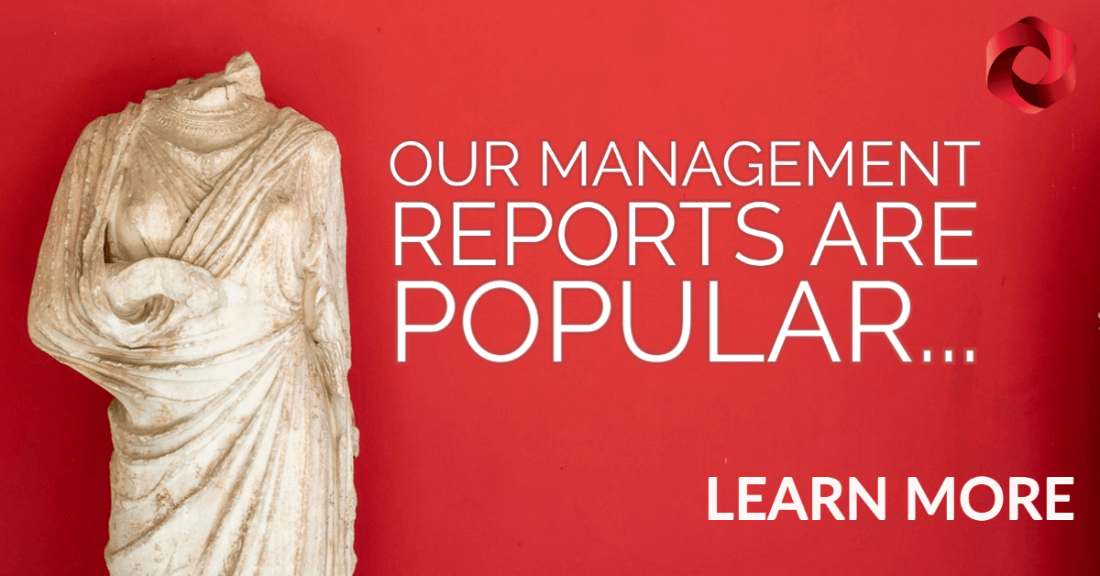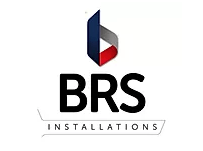R&D Tax relief: the effects of the April 2023 changes
- February 2023
- 5 minutes
R&D reliefs will be subject to a number of changes beginning in April 2023. We investigate what these modifications will entail and whether they will have an effect on the amount of suspicious activity in the aid industry.
These days, tax relief for research and development (R&D) is frequently in the news, though not always for the right reasons. Since April 2000, there has been relief; initially it was only available to SMEs, but in 2002 it was expanded to include large businesses as well. Numerous changes have been made in the intervening years to the legislation governing the relief as well as the “marketplace” for R&D tax advice.
The tax breaks are very generous for SMEs. It provides a tax deduction for an amount above the actual outlay and, frequently, a payment for losses that were surrendered. It is perhaps not surprising that it has attracted dishonest advisors looking to exploit and profit from it.
 Suspicious activity
Suspicious activity
The professional and ethical standards of professional bodies’ governing bodies as well as, for many in tax, Professional Conduct in Relation to Taxation, govern their members (PCRT). Unfortunately, not all companies that offer R&D tax relief services adhere to such high professional standards.
HMRC has long been concerned that “rogue advisers” are submitting claims that at the very least overstep the mark in an effort to take advantage of the R&D relief. The R&D relief sector had recently been found to have significant levels of suspicious activity, according to a more recent announcement. As a result, routine processing of claims was paused to allow resources to be allocated to investigating these suspicious claims. Indeed, HMRC recently announced that it has arrested eight individuals in connection with attempts to fraudulently claim more than £16 million of R&D relief.
Previously, HMRC set a goal of processing 95% of SME claims in 28 days, but this goal was increased to 40 days to allow for additional checks. Even going so far as to say that some of these claims are unmistakably fraudulent, HMRC. Although some claimants have received letters from HMRC’s Fraud Investigation Service, HMRC specialists recently denied that any company had actually been accused of fraud at a meeting of the R&D Communication Forum. The correspondence I have seen does not always support this assertion.
 Changes to R&D relief
Changes to R&D relief
The government has proposed a number of changes to the R&D reliefs. Some are due to come into effect from April 2023, while others will be rolled out soon after. On 20 July, draft legislation was published for those changes that will take effect from April 2023, with further changes announced by the Chancellor on 17 November in his Autumn Statement. In addition to a number of miscellaneous changes, the key proposals are described below.
 Claim notifications
Claim notifications
Under specific circumstances, businesses will be subject to a new requirement to submit claim notifications. A claim notification must be submitted within six months of the end of the relevant accounting period by any company that has not submitted an R&D claim or a claim notification in any of the three prior accounting periods. Otherwise, the claim will be invalid. Both R&D expenditure credits and SME relief claims will be subject to the requirement. We are still awaiting secondary legislation outlining the specifics of the notification and how it is to be made, which will be introduced with effect starting in April 2023.
This modification is described as an anti-abuse clause to stop the abuse of the R&D relief. However, it will burden all companies that conduct R&D, and punishing everyone seems like a harsh solution to this issue. It is likely that many impacted businesses, especially SMEs, won’t be aware of the modifications and the requirement to submit claim notifications, resulting in them missing out on R&D reliefs. This will specifically penalise newly established and expanding small businesses.
Additionally, this requirement is likely to cause a flood of “protective” notifications to be submitted in advance whenever there is any doubt regarding whether an expense qualifies for R&D relief.
 Provision of additional information
Provision of additional information
If the company does not provide the necessary additional information, claims will be void. This is anticipated to contain details about the type of qualifying activities as well as a breakdown of the eligible expenses included in the claim. I am aware that an online form must be used to submit this data.
The form is probably going to ask the company for the name of the senior officer who will be in charge of handling the claim as well as the name of any advisers who will be helping or advising them regarding the claim.
 Refocusing R&D relief towards activities undertaken in the UK
Refocusing R&D relief towards activities undertaken in the UK
The UK’s R&D relief schemes have traditionally been quite generous in that they did not have any territoriality restrictions regarding where the R&D was undertaken. This was clearly attractive in that it allowed companies to utilise specialised (and less costly) expert resource that happened to be located overseas and still benefit from the relief.
The arguable drawback of this approach, of course, was that the UK exchequer was rewarding and incentivising the development of this specialist expertise outside the UK. This proposal seeks to addresses that concern.
The proposed changes will cover work contracted out, contributions to independent R&D and the use of externally provided workers. They will apply to both the SME relief and the large company RDEC relief.
 Contracted out R&D
Contracted out R&D
When a company outsources work, it can only include the necessary amount of spending in its R&D claim if the spending is “UK or qualifying overseas spending.” The Corporation Tax Act of 2009’s new section 1138A defines these terms.
If a cost can be linked to R&D done in the UK, it is considered a UK expense.
 Qualifying overseas expenditure
Qualifying overseas expenditure
If the conditions outlined in s. 1138A(2) are met, the expenditure will be considered “qualifying overseas expenditure.” These state that the R&D-related conditions are not present in the UK, but rather in the location where the R&D is actually carried out, and that it would be completely unreasonable for the company to replicate those conditions in the UK.
These conditions may be geographical, environmental, or social, according to the proposed law. Additionally, the R&D may need to be done outside of the UK due to legal or regulatory requirements.
The law makes it abundantly clear that neither the price of R&D nor the labour pool will be regarded as pertinent conditions. As a result, it will not be taken into account as a condition that the expenditure qualifies as overseas spending if obtaining expertise in a particular field is more affordable abroad or if the expertise is only available abroad.
This may come off as a little harsh, especially in light of the expertise’s accessibility, but the intention seems to be to promote the growth of the expertise in the UK. HMRC did make the suggestion in a recent discussion about these proposals that it might be a “relevant condition” if the required expertise cannot be developed in the UK within a reasonable amount of time.
![]() R&D expenditure credits: For claims under R&D expenditure credits, the payment to the subcontractor (which must be a qualifying body, an individual or a partnership of individuals) will be eligible provided the expenditure meets the definition of ‘UK or qualifying overseas expenditure.’
R&D expenditure credits: For claims under R&D expenditure credits, the payment to the subcontractor (which must be a qualifying body, an individual or a partnership of individuals) will be eligible provided the expenditure meets the definition of ‘UK or qualifying overseas expenditure.’
![]() SME relief: For claims under the SME relief, the qualifying amount will depend on whether or not the company and the subcontractor are connected (i.e. where the subcontractor is under common control with the company contracting out the work):
SME relief: For claims under the SME relief, the qualifying amount will depend on whether or not the company and the subcontractor are connected (i.e. where the subcontractor is under common control with the company contracting out the work):
- Where the parties are connected, the definition of the subcontractor’s relevant expenditure in s 1134 is extended to include the requirement that it also be ‘UK or qualifying overseas expenditure’.
- Where the parties are not connected – and no connected party election has been made under s 1135 – the definition of the qualifying element of the subcontractor payment is amended to be ‘65% of so much of the subcontractor payment as comprises UK or qualifying overseas expenditure’. If it is necessary to apportion any expenditure for this purpose, this should be done on a just and reasonable basis.
Companies that outsource work must make sure they can accurately identify any portion of the work performed by the subcontractor that is not UK-based or qualifies for overseas spending in order to comply with these additional requirements. When the parties are related, this shouldn’t be an issue, but contracts involving unrelated parties should take this requirement into consideration.
 Externally provided workers
Externally provided workers
There will also be a restriction in places where businesses hire R&D personnel from outside sources. In this instance, the restriction will be based on the location of the taxation of the relevant earnings of the specific externally provided worker rather than the location of the work itself. The legislation will add a new section 1132A to the Corporation Tax Act 2009 that will define “qualifying earnings” as they relate to employees who are provided by third parties. These will be any sums from the employee’s pay that:
- the staff controller has a liability, in respect of those earnings, to account to HMRC for an amount in respect of income tax under PAYE and class 1 NICs; or
- the earnings are in respect of relevant R&D undertaken outside the UK but where the ‘conditions’ defined in s 1138A (2) apply (see above).
This definition then feeds into the calculation of the expenditure on externally provided workers that can be included in the R&D claim.
![]() Connected parties: The eligible expenditure is still the lower of the actual expenditure and the staff controller’s relevant expenditure when the connected party provisions of Section 1129 are in effect. The term “qualifying earnings” of externally provided workers is added to the definition of the staff controller’s relevant expenditure.
Connected parties: The eligible expenditure is still the lower of the actual expenditure and the staff controller’s relevant expenditure when the connected party provisions of Section 1129 are in effect. The term “qualifying earnings” of externally provided workers is added to the definition of the staff controller’s relevant expenditure.
![]() Non-connected parties: In cases involving non-connected parties, Section 1131(2) has been changed to read, “65% of so much of the staff provision payment as is incurred in respect of qualifying earnings of externally provided workers.” As before, if expenditure must be allocated to meet this requirement, it should be done in a fair and reasonable manner. So that they can be certain they are only claiming the proper amount, businesses will need to verify that the earnings of the workers who are provided by external sources are relevant earnings.
Non-connected parties: In cases involving non-connected parties, Section 1131(2) has been changed to read, “65% of so much of the staff provision payment as is incurred in respect of qualifying earnings of externally provided workers.” As before, if expenditure must be allocated to meet this requirement, it should be done in a fair and reasonable manner. So that they can be certain they are only claiming the proper amount, businesses will need to verify that the earnings of the workers who are provided by external sources are relevant earnings.
The changes above will not affect that relief because of how the definitions of R&D contracted out (both connected and unconnected) are written for figuring the R&D fraction for patent box. This proposed legislation includes a clause that ensures the new rules pertaining to externally provided workers do not apply for patent box purposes in order to ensure consistency in that calculation.
Contributions to independent research
This applies to claims by large companies and Corporation Tax Act 2009 s 104L will be amended to include the requirement that the expenditure is UK or qualifying overseas expenditure.
 Changes to eligible expenditure
Changes to eligible expenditure
It is planned to amend Section 1125 of the Corporation Tax Act of 2009 to permit R&D claims to also include expenses for data and cloud computing.
Currently, businesses are allowed to deduct the cost of pertinent software, which HMRC interprets to mean the cost of software licences. However, the software industry has advanced significantly, and more and more software is now offered as “software as a service” (SaaS) rather than through the purchase of individual licences. Additionally, R&D activities are increasingly carried out using datasets that are acquired specifically for those activities, and processing is carried out using remote, cloud-based resources. These modifications aim to more accurately capture the current requirements of companies conducting this kind of R&D.
Relief will be given for the costs of a data licence. For this purpose, a data licence will be a licence to access and use a collection of digital data within an R&D project.
There will be some limitations on the eligibility of data costs. The company acquiring the licence must not have the right to sell that data, or to publish or share the data with a third party, other than as part of the R&D activity. Finally, expenditure on a data licence will not be eligible expenditure if the licence is attributable to a qualifying indirect activity.
 Cloud computing
Cloud computing
Insofar as cloud computing expenses are directly related to qualifying R&D activities, they will be reimbursed. The provision of access to and maintenance of remote data storage, operating systems, software platforms, or hardware facilities are all included in cloud computing services.
Spending on cloud services will be subject to the same restrictions as those listed above.
 Rate changes
Rate changes
The Chancellor announced that the rates would change for both the SME relief and the RDEC in his Autumn Statement. The modifications will be effective for expenses incurred on or after April 1, 2023.
It is planned to cut the super deduction rate for the SME relief from 130% to 86% and the rate at which losses can be surrendered for payable credit from 14.5% to 10%. It is obvious that this is an effort to, at the very least, make the SME scheme less appealing to the kinds of fraud attacks that HMRC has recently stopped.
The RDEC rate will also increase from 13% to 20% at the same time. Because the RDEC is a taxable credit, the upcoming increase in the headline rate of corporation tax to 25% would have lessened the actual benefit of the relief. An increase to 20% demonstrates the intention to make the RDEC more alluring as an increase to 14% would have been sufficient to maintain the effective benefit.
Together, the changes will reduce the difference between the two programmes’ benefits for claimants, though the SME programme remains slightly more alluring.
















